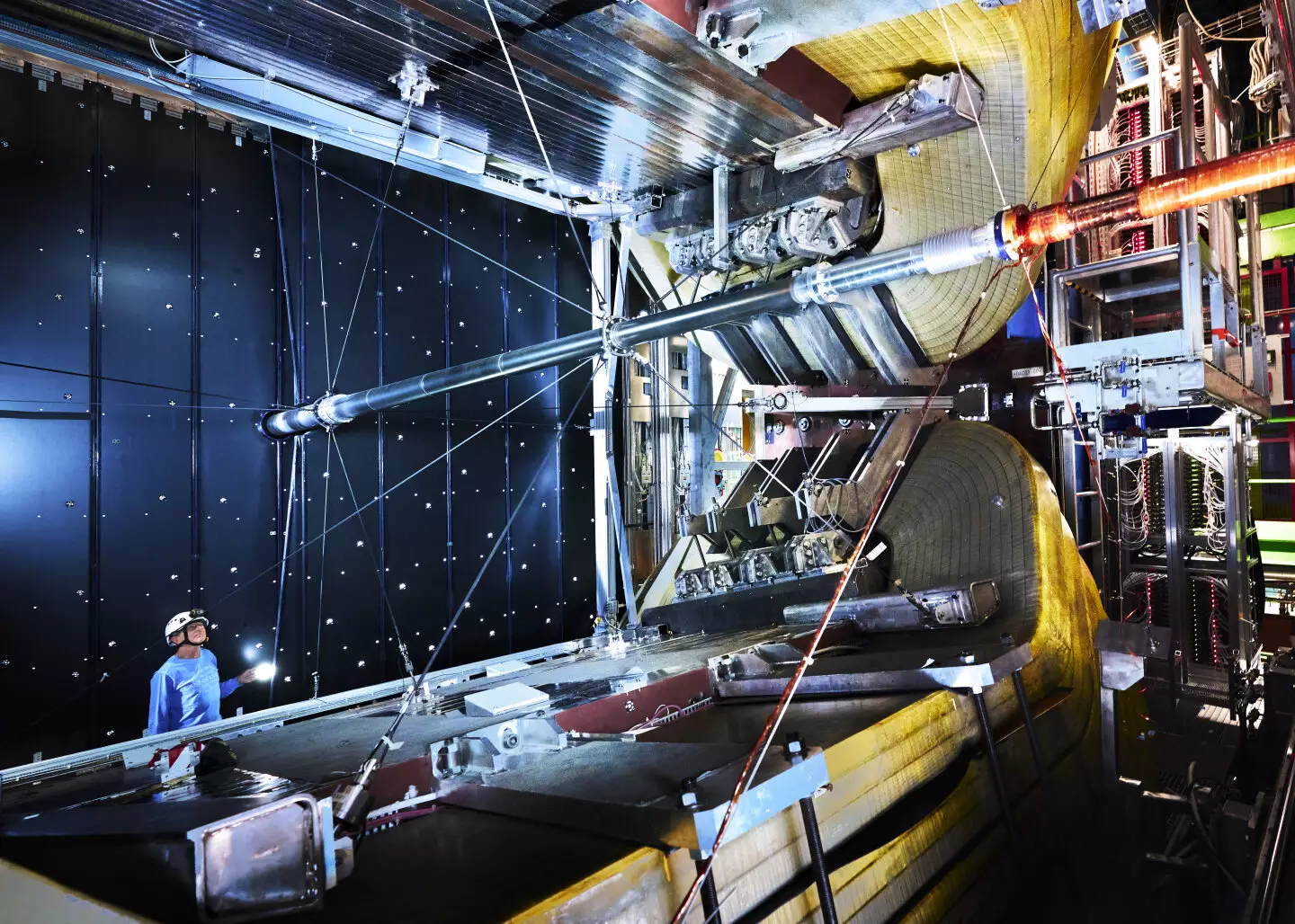In a recent publication on the arXiv preprint server, the LHCb collaboration announced a groundbreaking discovery – the observation of the decay of the Bc+ meson into a J/ψ charm-anticharm quark bound state and a pair of pions, specifically π+ and π0. This observation sheds light on a previously unexplored decay process involving an intermediate particle, the ρ+ meson, which plays a crucial role in the decay sequence.
The Bc+ meson, composed of heavy quarks b and c, represents a unique particle in the realm of mesons due to its heavy constitution that necessitates decay through weak interactions. The decay process into an odd number of light hadrons and a J/ψ, such as in this case, offers valuable insights into the dynamics of particle interactions and the nature of these decays.
One of the primary challenges in observing this decay process lies in the precise reconstruction of the low-energy π0 meson, which decays into a pair of photons, making it a formidable task within the high-energy environment of an LHC proton-proton collision. This challenge underscores the complexity and intricacy of particle physics experiments and the meticulous work required for accurate measurements.
Implications for Experimental Physics
The successful observation of the Bc+→J/ψπ+π0 decay opens new avenues for studying the properties and decay modes of Bc mesons, as well as rare decays of B0 mesons. The comparison of experimental measurements with theoretical predictions, which have been developed over several decades, provides an opportunity to validate our understanding of fundamental particle interactions and the underlying mechanisms governing these decays.
Connection to Theoretical Framework
The decays of Bc into J/ψ and an even number of pions bear resemblance to other well-known processes in particle physics, such as the decay of the τ lepton into an even number of pions and e+e– annihilation into an even number of pions. These connections highlight the interconnectedness of different particle decay modes and the importance of studying these processes to enhance our understanding of the fundamental forces at play.
The wealth of data generated by experiments at the LHC, coupled with advancements in detector technologies, offers unprecedented opportunities to delve deeper into the properties of mesons like Bc+ and unravel the mysteries of their decays. The continuous exploration of particle interactions at higher energies and with greater precision holds the promise of unveiling new phenomena and enriching our knowledge of the subatomic world.
The recent observation of the decay of the Bc+ meson into a J/ψ charm-anticharm quark bound state and a pair of pions represents a significant milestone in the field of particle physics. This discovery not only enhances our understanding of meson decays but also paves the way for further research into the properties and interactions of these fascinating particles. The intricate interplay between theory and experiment highlighted by this discovery underscores the collaborative efforts of the scientific community in unraveling the mysteries of the universe at the smallest scales.


Leave a Reply